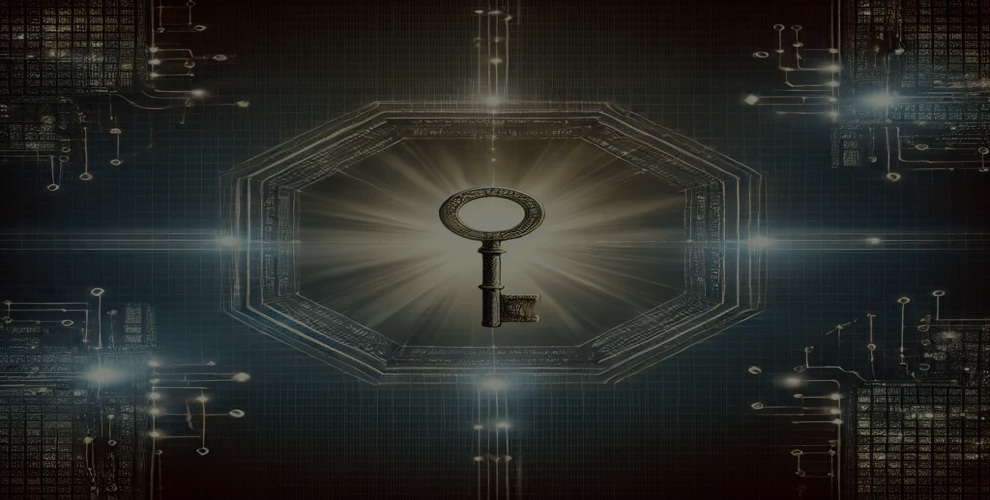
Unlock Blockchain Potential: A Developer’s Guide
Table of Contents
Introduction
Welcome to WikiGlitz!
We’ve brought you this comprehensive guide to unlocking the full potential of blockchain technology.
As blockchain continues to revolutionize various industries, understanding its development is crucial for modern developers.
This guide will provide you with the knowledge and tools needed to navigate the complexities of blockchain, from learning how to become a blockchain developer to mastering the best practices and tools essential for success.
Whether you’re a seasoned developer or just starting, this guide will help you leverage blockchain’s transformative power.
Key Takeaways:
- Understanding the fundamentals of blockchain development is crucial for modern developers.
- Utilizing the right tools and following best practices can unlock the full potential of blockchain.
- Staying updated on the latest trends and challenges in blockchain technology is essential for long-term success.
Understanding Blockchain Development
What is Blockchain? Blockchain Architecture Explained
Blockchain is a decentralised computer network ledger that keeps track of transactions.
Unlike traditional databases, a blockchain is inherently secure, transparent, and immutable due to its unique architecture.
Each block in a blockchain contains a list of transactions and is linked to the previous block, forming a chain.
This structure ensures that once data is recorded, it cannot be altered without altering all subsequent blocks, which requires the consensus of the network.
Blockchain Development Guide: An Overview
Blockchain development involves creating and managing blockchain-based applications, also known as decentralized applications (dApps).
These applications run on a blockchain network and are powered by smart contracts—self-executing contracts with the terms of the agreement directly written into code.
To begin blockchain development, developers need a strong understanding of blockchain architecture, programming languages, and the various development tools available.
How to Start with Blockchain Development: A Step-by-Step Guide
Starting with blockchain development requires a clear roadmap. Here’s how you can begin:
- Learn the Basics: Start by understanding blockchain technology, its history, and its key components. This will give you a strong foundation to build upon.
- Master Blockchain Programming Languages: Languages like Solidity, Rust, and Go are essential for blockchain development. Learning these will enable you to write smart contracts and develop dApps.
- Choose a Blockchain Platform: Platforms like Ethereum, Hyperledger, and Polkadot offer various tools and resources for blockchain development. Choose one that aligns with your goals.
- Explore Development Tools: Familiarize yourself with tools like Remix, Truffle, and Ganache that facilitate blockchain development and testing.
- Build Your First dApp: Start small by creating a basic decentralized application. This hands-on experience is invaluable in understanding the nuances of blockchain development.
Essential Blockchain Developer Skills
Core Skills Required: How to Become a Blockchain Developer
Becoming a blockchain developer requires a mix of technical skills and industry knowledge. The following are essential competencies:
- Proficiency in Programming Languages: Solidity for Ethereum, Rust for Polkadot, and Go for Hyperledger are crucial.
- Understanding of Cryptography: Knowledge of cryptographic algorithms is essential for securing blockchain transactions.
- Familiarity with Smart Contracts: Learn how to write, deploy, and manage smart contracts, which are the backbone of many blockchain applications.
- Experience with Blockchain Platforms: Hands-on experience with platforms like Ethereum, Hyperledger, or Corda will set you apart from other developers.
Understanding Blockchain Programming Languages
Different blockchains utilize different programming languages. Here’s a brief overview of some of the most important ones:
- Solidity: Solidity: The most widely used programming language on Ethereum for creating smart contracts. It’s similar to JavaScript, making it accessible for many developers.
- Rust: Used in blockchains like Polkadot, Rust is known for its performance and safety features, making it ideal for complex, high-performance applications.
- Go: Commonly used in Hyperledger Fabric, Go is a statically typed language known for its simplicity and efficiency in building large-scale applications.
Exploring Blockchain Development Platforms: Which One is Right for You?
The success of your project depends on the blockchain development platform you choose. Here are a few well-liked choices:
- Ethereum: Known for its robust ecosystem, Ethereum is the go-to platform for dApp development, thanks to its extensive developer community and support for smart contracts.
- Hyperledger Fabric: Ideal for enterprise-level applications, Hyperledger Fabric offers a modular architecture that allows developers to create customizable blockchain solutions.
- Polkadot: This platform facilitates interoperability between blockchains, making it an excellent choice for developers looking to create cross-chain applications.
Blockchain Development Tools and Platforms
Key Blockchain Development Tools Every Developer Should Know
The right tools can significantly enhance your efficiency and effectiveness as a blockchain developer. The following are some vital resources you ought to be aware of:
- Remix IDE: A browser-based Integrated Development Environment (IDE) that is perfect for writing, testing, and deploying smart contracts in Solidity. It’s user-friendly and widely used in the Ethereum development community.
- Truffle Suite: A comprehensive suite of tools for blockchain development, including a development environment, testing framework, and asset pipeline for Ethereum. It makes the development of decentralised apps easier.
- Ganache: Part of the Truffle Suite, Ganache allows developers to create a personal Ethereum blockchain for testing smart contracts, running commands, and inspecting state while controlling how the chain operates.
- Metamask: Metamask: An add-on for your browser that lets you run Ethereum decentralised apps directly in your browser without having to launch a full Ethereum node.
- Infura: A set of tools for building decentralized applications. Infura provides instant, scalable access to Ethereum and IPFS networks without the need to manage nodes.
How to Build a Blockchain Application: A Beginner’s Guide
Building a blockchain application involves several steps:
- Define the Use Case: Clearly understand the problem your application will solve and why blockchain is the right solution.
- Select the Blockchain Platform: Based on your requirements, choose a platform like Ethereum, Hyperledger, or Polkadot.
- Design the Architecture: Plan the structure of your application, including how data will be stored and managed on the blockchain.
- Develop Smart Contracts: Write the code for the smart contracts that will govern the operations of your dApp.
- Test and Deploy: Use tools like Ganache and Truffle to test your application thoroughly before deploying it on the main network.
Blockchain Developer Roadmap: Navigating the Path to Success
A clear roadmap is essential for anyone looking to succeed in blockchain development. Here’s a suggested path:
- Foundation: Learn the basics of blockchain technology and how it works.
- Programming: Gain proficiency in programming languages relevant to blockchain, such as Solidity, Rust, or Go.
- Smart Contracts: Master smart contract development and understand how they function within a blockchain ecosystem.
- Tools: Familiarize yourself with essential development tools like Remix, Truffle, and Ganache.
- Testing and Security: Learn how to test smart contracts and secure your applications against common vulnerabilities.
- Community Involvement: Engage with the blockchain community through forums, GitHub, and attending relevant events. This will keep you updated on the latest trends and best practices.
Best Practices for Blockchain Development
Blockchain Development Best Practices: Tips for Success
Adhering to best practices is crucial for building reliable and secure blockchain applications. Here are some tips:
- Follow Security Protocols: Security should be a priority from the start. Regularly audit your code, use established libraries, and avoid unnecessary complexity in your smart contracts.
- Keep Code Simple: Write clear and concise code. Simpler code is easier to audit, maintain, and secure.
- Test Thoroughly: Conduct extensive testing on multiple levels, including unit tests, integration tests, and end-to-end tests. Tools like Truffle and Ganache can be instrumental in this process.
- Stay Updated: Blockchain technology is evolving rapidly. Continuously educate yourself on the latest developments, tools, and best practices.
Common Challenges in Blockchain Development and How to Overcome Them
Blockchain development comes with its own set of challenges. Here are some tips for handling some of the more typical ones:
- Scalability: Blockchain networks can become slow and expensive as they scale. Solutions like sharding, layer-2 protocols, and optimized consensus mechanisms can help.
- Security: The decentralized nature of blockchain means that security risks are different from traditional applications. Regular audits, following security best practices, and staying informed about new vulnerabilities are key to managing these risks.
- Interoperability: There is frequently poor communication between several blockchains.Using platforms like Polkadot, which focuses on cross-chain interoperability, can mitigate this issue.
How to Unlock Blockchain Potential with Best Practices and Tools
By combining the right tools with best practices, you can unlock the full potential of blockchain technology:
- Use the Right Tools: Tools like Remix, Truffle, and Ganache streamline the development process, making it easier to build robust and efficient applications.
- Adopt Best Practices: Following best practices ensures that your applications are secure, scalable, and maintainable.
- Stay Informed: The blockchain landscape is constantly changing. Staying updated with the latest tools, trends, and practices will help you leverage blockchain’s full potential.
Future of Blockchain Technology
Emerging Trends and the Future of Blockchain Technology
Blockchain technology is still in its early stages, and its future is filled with possibilities. Here are some trends to watch:
- Interoperability: The future of blockchain will likely see increased interoperability between different blockchains, enabling them to communicate and share data seamlessly.
- Scalability Solutions: As blockchain adoption grows, new solutions for scalability, such as layer-2 protocols and sharding, will become more critical.
- Decentralized Finance (DeFi): DeFi is rapidly growing, providing decentralized alternatives to traditional financial systems. This trend is expected to continue, with more sophisticated financial products being developed on blockchain platforms.
Blockchain Use Cases for Developers: Current and Future Opportunities
Blockchain is being used in a wide range of industries, and the possibilities are expanding. Here are a few use scenarios from the present and future:
- Supply Chain Management: Blockchain provides transparency and traceability in supply chains, helping to reduce fraud and inefficiencies.
- Healthcare: Blockchain can secure patient data and improve the interoperability of health records across providers.
- Digital Identity: Blockchain offers a decentralized and secure way to manage digital identities, reducing the risk of identity theft.
- Voting Systems: Election integrity can be ensured through the use of blockchain technology to develop transparent and impenetrable voting systems.
The Evolving Role of Blockchain in Various Industries
As blockchain technology matures, its role in various industries will continue to evolve:
- Finance: Beyond cryptocurrencies, blockchain is transforming how financial transactions are processed, with implications for everything from banking to insurance.
- Energy: Blockchain is enabling peer-to-peer energy trading and more efficient management of energy resources.
- Real Estate: Blockchain can streamline the process of buying, selling, and managing property by reducing paperwork and increasing transparency.
Conclusion
Thank you for joining us at WikiGlitz!
We hope this comprehensive guide has equipped you with the knowledge needed to unlock the potential of blockchain technology.
From the fundamentals of blockchain development to exploring essential tools, best practices, and emerging trends, this guide is designed to support you in your journey as a blockchain developer.
As blockchain technology continues to evolve and impact various industries, staying informed and adaptable will be crucial.
By following the insights provided in this guide, you’re well on your way to contributing to the future of decentralized applications.
Follow WikiGlitz for more insights into the world of technology and blockchain. Stay ahead of the curve with our expert content and continue to explore the limitless possibilities that blockchain offers.
FAQs
What is the first step in blockchain development?
The first step in blockchain development is understanding the basics of blockchain technology, including its architecture, how it works, and its key components. Once you have a solid foundation, you can start learning blockchain programming languages like Solidity and exploring different blockchain platforms.
Which programming languages are most commonly used in blockchain development?
The most commonly used programming languages in blockchain development are Solidity (for Ethereum), Rust (used in Polkadot), and Go (commonly used in Hyperledger Fabric). These languages are essential for writing smart contracts and developing decentralized applications.
What are the biggest challenges in blockchain development?
Some of the biggest challenges in blockchain development include scalability, security, and interoperability. As blockchain networks grow, they can become slower and more expensive to operate. Security is also a major concern, as the decentralized nature of blockchain presents unique risks.Another difficulty faced by developers is interoperability, or the capacity of several blockchains to communicate with one another.
How can developers stay updated on the latest trends in blockchain technology?
Developers can stay updated by following blockchain-focused communities, attending conferences, participating in online forums, and continuously learning through courses and certifications. Engaging with the blockchain community on platforms like GitHub and staying informed about new developments in blockchain technology is also crucial.
What are some future use cases of blockchain technology?
Future use cases of blockchain technology include advancements in supply chain management, healthcare, digital identity, and voting systems. Blockchain’s potential to provide transparency, security, and efficiency in these areas makes it a promising technology for the future.
Want to keep up with our blog?
Our most valuable tips right inside your inbox, once per month.
Error: Contact form not found.
WikiGlitz Team
Welcome to WikiGlitz, your ultimate destination for tech insights and innovation. Our expert team is dedicated to delivering free resources and professional advice on various technology topics, including Artificial Intelligence, Cyber Security, Cloud Computing, and more. We strive to empower our readers with up-to-date information and practical guidance, ensuring you stay ahead in the rapidly evolving tech landscape. At WikiGlitz, we are passionate about making complex technology accessible to everyone. Our team of seasoned experts curates content that is both informative and engaging, helping you understand and leverage the latest tech trends. Whether you're a tech enthusiast or a professional, WikiGlitz is your go-to source for reliable, expert-driven content. Join us on this journey to explore and embrace the future of technology.





